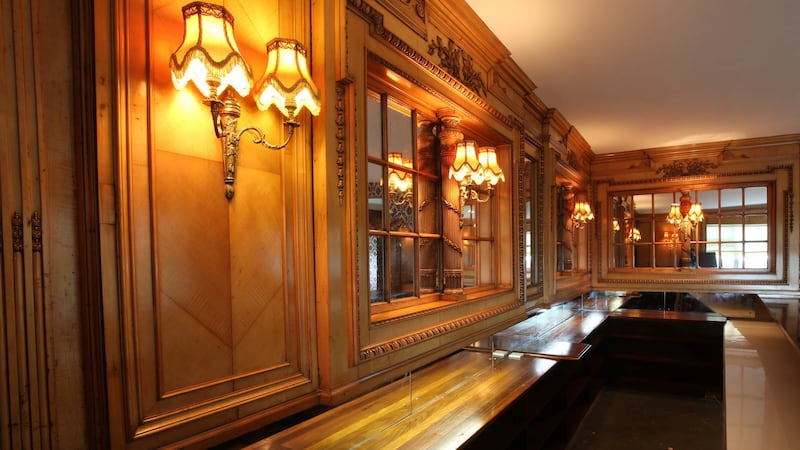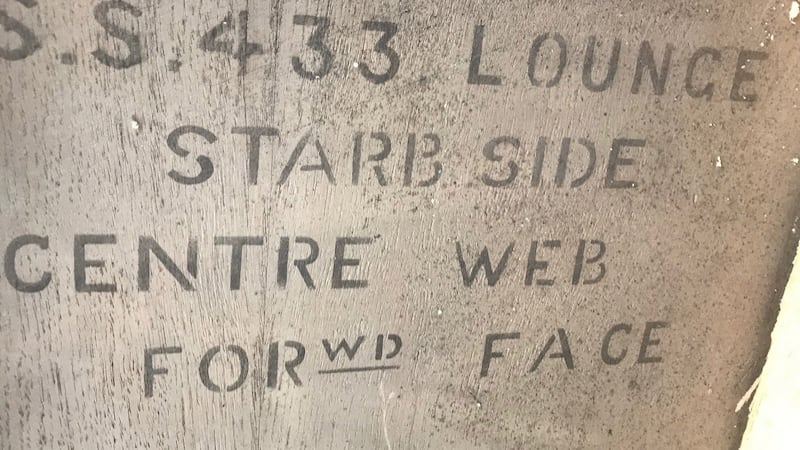Luck can be a double-edged sword. For Irish-Argentinian nurse Violet Jessop, better known throughout maritime history as "Miss Unsinkable", there is some debate as to whether luck was really on her side. Jessop survived the sinking of three ocean liners.
Born into an Irish family based in Argentina – her mother Katherine Kelly was raised at Merrion Square in Dublin – she worked for White Star Line shipping company as both a nurse and stewardess.
She was one of the 710 survivors of the Titanic, the “unsinkable ship” built by Harland and Wolff in Belfast, in which an estimated 1,500 people perished after it hit an iceberg. Not only did Jessop survive this, she also survived the sinking of the Titanic’s sister ship, the HMHS Britannic, and was also on board the third of White Star’s ocean liners, the RMS Olympic when it collided with a warship in 1911.
In her memoirs she records the circumstances of her survival from the foundering of both vessels.
A devout catholic, Jessop attributed her Titanic survival to a Hebrew prayer given to her by an Irish woman, said to protect her from fire and water, which she was reading when the liner sank on April 15th, 1912.
On the Britannic, which sank in 1916, her life was again spared. Jessop describes how “all the deck and machinery fell into the sea like a child’s toys” from the 270m long vessel weighing 50,000 tonnes which took just 55 minutes to sink.
She survived the Britannic’s sinking due to her timely decision to jump from a lifeboat after seeing it was being sucked in by mammoth propellers – each measuring 7m across and weighing 38 tonnes – which eventually churned it to pieces.

Titanic’s sister
The Britannic was a later, upgraded model of the Titanic, with improved safety features, and the last of the trio of Olympic Ocean Liners by White Star. These liners, the epitome of luxury, were decked out with swimming pools, Turkish baths and private state rooms, and a first-class ticket to cross the Atlantic would cost about €100,000 in today’s money.
But the Britannic also had private bathrooms – which the Titanic did not, in addition to a smoking room and library, and a hairdressing salon in second class.
While the ship was being lavishly furnished in 1915, the first World War began, and it was requisitioned by the British government, after the sinking of the RMS Lusitania by a U-boat off the coast of Cork the same year.
Within months, the décor changed from that of a five-star floating hotel to a functional hospital – with 3,309 beds on the lower decks, and operating theatres in what were the first-class reception lounges.
Britannic roamed the Mediterranean, with Jessop and other medical staff tending to war casualties on board, until the liner sank a year later in 1916. .
Its exact whereabouts were unknown until naval officer and underwater explorer Jacques Cousteau discovered the boat on the seabed off Greece in 1975.

In 1919, the furnishings from Britannic – which were either never installed due to the ship’s requisition, or removed during its remodelling to be a hospital – were sold off in Belfast.
At that time, the highly embellished oak panelling from the first-class reception rooms – identical to those on the Titanic and Olympic – were purchased by La Scala Theatre and Opera House in Dublin (later the Capitol cinema), where they graced the walls until it was knocked in 1972.
They have since framed the walls of a private library in Dublin, and now form part of the Britannic sale by Niall Mullen* and Victor Mee on May 1st and 2nd at the Heritage Hotel outside Portlaoise.
Nautical items
Lot 433 – also the number of the Britannic in the White Star inventory, and the panels all bear the figures – is 25sq m of carved maple. Designed by Arthur Durand, who also helped design the Eiffel Tower, these panels were originally destined to be in the second-class library (€200,000-300,000).
Lot 433a is 60sq m of oak in Louis XV style – also by Durand – including original mirrors and 10sq m of maple, designed for the first-class lounge (€250,000-350,000).

There are a number of nautical items, such as White Star china, ships’ cases, anchors and props included in the auction.
Also under the hammer are contents from several hotels and bars including the Dylan in Dublin’s Ballsbridge, which has just undergone a refurbishment, and some items of interest from the Sheen Falls in Kenmare, Co Kerry, and the Morrison in Dublin.
An elliptical leaded blue glass ceiling light (3mx2.4m/10x8ft) which hung in the Shelbourne Hotel for decades is also listed (€1,000-2,000) as is the love heart Art Nouveau mirror from Dublin's Café en Seine (€1,500-3,000), and with a selection of Art Deco centre lights (€400-600).
[ victormeeauctions.ieOpens in new window ]
*This article was amended on April 22nd, 2019



















